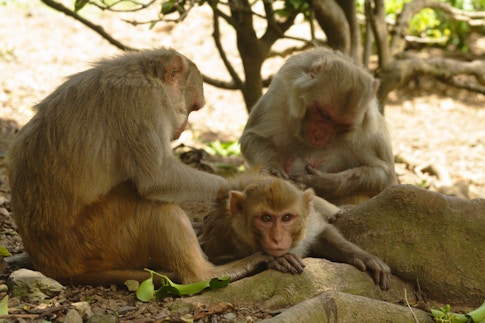
Difficulty with social interactions is a core feature of autism spectrum disorder (ASD). Non-human primates, with their rich repertoire of social behaviors, are a potentially useful animal model to better understand the neural circuitry involved in social interactions. With support from a SFARI Research Award, SFARI Investigator Michael Platt has been exploring the use of rhesus macaque monkeys to examine the safety, efficacy and mechanisms of oxytocin and brain stimulation therapies for social behavior in ASD. His laboratory’s recent study characterizing the neural pathways involved in social cooperation in monkeys is a step in this direction (Ong, Madlon-Kay and Platt, Nat. Neurosci., 2021).
During social interactions, individuals tap into their ability to empathize with the emotions of others, which encourages positive social exchanges. In addition, people use strategic reasoning about others’ desires and goals to make cooperative decisions. In humans, imaging studies have suggested a role for the anterior cingulate cortex gyrus (ACCg), the anterior insula and the amygdala in empathizing. A separate system involving the dorsomedial prefrontal cortex (dmPFC) and the temporoparietal junction (TPJ) has been linked to strategic planning, with the middle superior temporal sulcus (mSTS) in monkeys appearing to be homologous to the human TPJ.
In their recent study, Platt and colleagues had monkeys play a modified, iterative version of the strategic cooperation game “chicken.” Neural recordings were made in both the ACCg and mSTS of these monkeys. An examination of these recordings in combination with mathematical modeling of the animals’ decision-making behaviors indicate that the animals create rich internal representations of others that inform their strategic thinking during social cooperation. While both ACCg and mSTS activity encode abstract social information, the mSTS appears to play a more critical role in guiding strategic thinking. This work provides a baseline for utilizing non-human primates as a model for examining social processes and treatments for social behaviors in ASD.
Reference(s)
Neuronal correlates of strategic cooperation in monkeys.
Ong W.S., Madlon-Kay S., Platt M.


